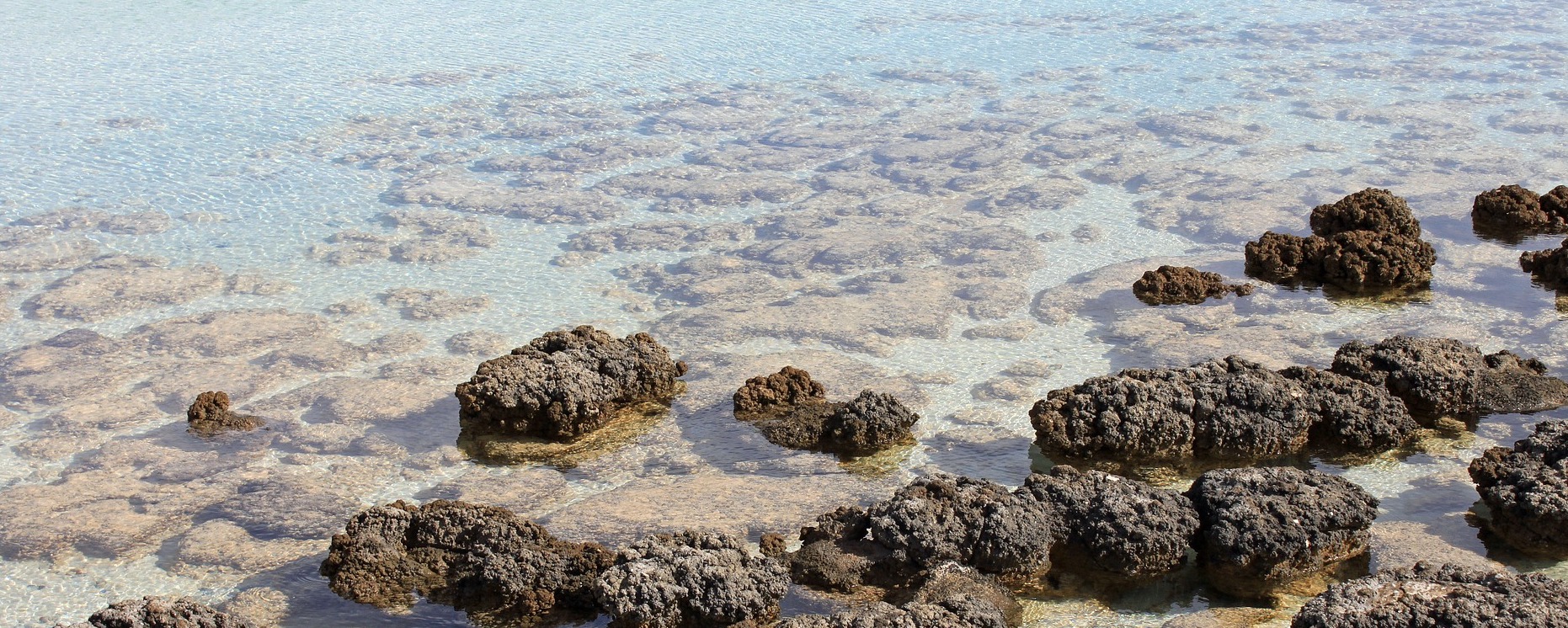
Science is a quest for truth about the natural world, and for the scientist this search for understanding an exciting adventure. In much of my work it begins with a search for patterns: patterns which are consistent and from which meaning can be extracted. This consistency coupled with a straightforward way of uniting and integrating the data they provide underlies much of scientific logic and draws heavily on the idea of an ordered world. For the scientist who is a Christian, this is God’s ordered world, and understanding the natural world leads to a better understanding of how God works.
The scientific quest is not always straightforward. An example is the history of life on Earth. Piecing together this history has required the careful analysis of a large amount of fossil material leading to what is now a clear idea how life evolved over the past 600 million years. But this is not the whole story, for there is evidence from geochemical signals hidden in the rock record of much earlier life on Earth, although it’s difficult to find visible evidence. The rock record from the earliest stages of Earth’s history is fragmentary and rocks of this age tend to have lost their original features through later folding and fracturing.
There is, however, one line of reasoning that can be used to extend the history of life back in time and this is the evidence from stromatolites. Stromatolites areprimitive bacterial and algal colonies made up of groups of single-celled organisms which trap fine grained limestone-mud and are preserved as a distinctive banded, hummocky unit a few centimetres high in limestone rock. Stromatolites still form today in warm shallow seas. Their banded form reflects seasonal growth, and their rounded hummocky nature comes from their tendency to grow towards the light.
There are well-documented stromatolites in 3.5 billion year-old rocks in the Pilbara region of western Australia, meaning that we have powerful evidence for life on Earth from this time. Recently. an exciting new discovery was published in the scientific journal Nature. Stromatolites were identified in rocks at Isua in west Greenland[1]which are 3.7 billion years old, pushing back the record of life on Earth by 200 million years.
As is the way with science, not all scientific discoveries stand the test of time. A new report published in Naturein November of this year[2]has argued that these older structures that were described as stromatolites are actually non-biological in origin. The rocks at Isua have a complex history, as might be expected from their great age. They have been buried to more than 20 km depth and heated until they became plastic. Original structures such as sedimentary layers become folded and distorted, former mineral grains recrystallize, and the rocks take on a different appearance from their original form. In this new study, the authors re-interpret the ‘stromatolite’ features in terms of rock deformation and subsequent chemical alteration.
Through an examination of the rock samples in three dimensions, and by using X-rays to look closely at their chemistry, this new study argues that the ‘conical’ structures reported as stromatolites are actually ridges produced by folding in the rock. The layering that looks so much like seasonal growth is shown to come from chemical alteration of sedimentary layers. This all leads to the overwhelming conclusion that the structures previously described as biological in origin are not stromatolites, but that natural processes have mimicked biological activity.
This new study vividly illustrates the self-correcting nature of the scientific discourse. The central feature of science is that it is based on evidence, in this case field and laboratory observations, which can be replicated by other scientists. The first group of scientists found an area of rock that had recently been revealed by new snow melt, and argued in a very sophisticated way – using both field-based and geochemical evidence – that the structures they observed were biologically-caused features which had escaped the rock deformations that are so common in the Isua area.
The line of reasoning in this first study was fine on one level, because there are other examples of original features preserved in the Isua rocks – but it was chancy. The authors assumed this outcrop was pristine and unaltered, when that is not the character of most Isua sediments. The rocks at Isua are far more intensively deformed and chemically altered than the 3.5 billion-year old stromatolites from Australia, so the proposal that there are stromatolites at Isua needed further scrutiny – and that is exactly what happened. The deeper examination of the evidence, which was reported in the more recent Nature paper, has provided us with a different explanation – and one that is more consistent with the geology of the region.
So the first paper was worth publishing because it stimulated the work in the second paper. This is how science progresses, with groups of scientists refining the work of their peers. Hanging tantalisingly in the background to this latest Nature paper is evidence of a different kind for life at Isua 3.7 billion years ago. The geochemistry of tiny carbon grains in sediments from Isua indicates that these grains are degraded carbon-rich molecules of biological origin. More recently a similar discovery was made in equally ancient rocks in northern Canada, giving a strong indication that life was present very early in the history of the Earth. This work shows just how fertile the Universe is, and is consistent with my own belief in a life-giving God.
[1]Nutman et al., 2016, Nature, 537, 535-538.
[2]Allwood et al., 2018, Nature, 563, 241-244.

Professor Hugh Rollinson was Course Director at the Faraday Institute and is Emeritus Professor of Earth Sciences at the University of Derby. After graduating from Oxford Hugh worked for a number of years as a field geologist in the Geological Survey of Sierra Leone. This was followed by a PhD at the University of Leicester and then a post-doc at the University of Leeds. He then joined the University of Gloucestershire and worked there for 20 years, during which time he took a three year leave of absence to work as Associate professor of geology and head of Department in the University of Zimbabwe. He then took a position as Professor of Earth Sciences and Department Head at Sultan Qaboos University in Oman for six years after which he served as Professor of Earth Sciences and Department Head at the University of Derby. Hugh’s academic interests are in the earliest part of Earth history – the first two billion years of planetary evolution and these are summarised in his text ‘Early Earth Systems’ (Wiley-Blackwell, 2007).
Hugh has had a life-long commitment to the Christian faith and has sought to integrate his beliefs with his scientific work. This has largely been through serving the local church wherever he has lived. He has a strong commitment to making the Christian faith accessible and engaging in dialogue with those who hold divergent views.